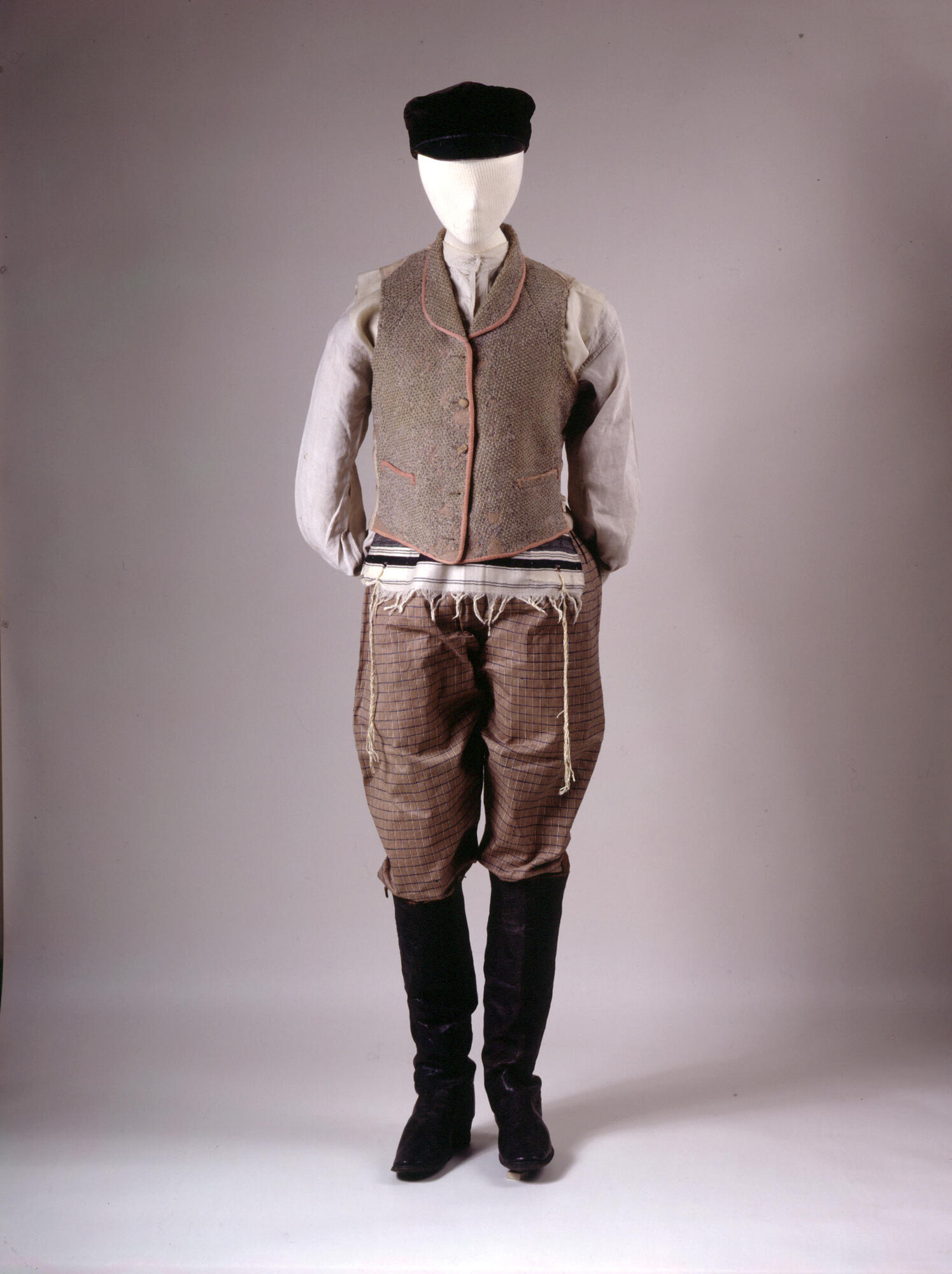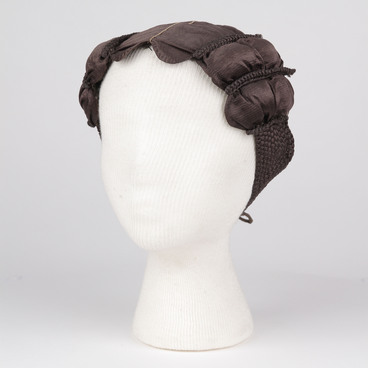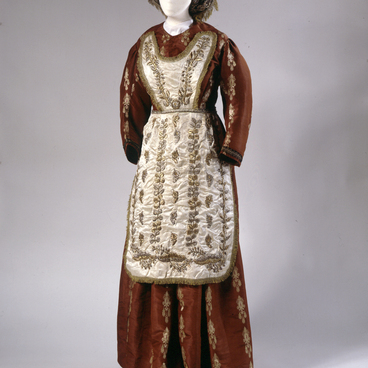The Jews did not wear clothing woven from wool and linen threads at the same time, because the Bible says it is forbidden to mix animal and vegetable fibers. The tenets of Judaism affected mainly men’s clothing, since it was men who had most of the religious responsibilities. They kept traditional Jewish men’s clothing unchanged through the centuries.
Every Jewish man from the age of 13 wore an arbekanfes, or talit katan, a rectangular prayer cloth with a hole for the head, under his outer garment. According to the Torah commandment, tzitzit, or braided threads, were attached to its four ends. While praying, the knots on the tzitzit had to be fingered, just as on a rosary.
The outer garment of the Jews was the camisole, which over time evolved into a vest. On top of the vest they wore a kapota, a long frock coat similar to a full-length overcoat. The poor wore it on their naked bodies and their arbekanfes. Men girded their kapotas with a belt or gartel, a woven wool or silk sash. The gartel had a religious function: without girding up, a man could not stand in prayer.
Traditional Jewish men’s clothing was black or dark-colored. Wealthy Jews bought an extra formal suit for Sabbaths and holidays. Smart kapotas were made of satin or rich silk, so well-to-do Jews were called “silk” men. Men’s suits were often accessorized with neckerchiefs or ties.
On their legs Jews wore short, knee-length pants, white stockings, boots, or shoes with buckles. Older Jews and orthodox Jews wore shoes without heel caps, made of thick leather and worn over shoes or directly over stockings.
The head of a righteous Jew was to be covered at all times. There were a number of headdresses, including a very distinctive small cloth cap — yarmulke, that was worn at home and in the synagogue. It was kept on under the hat that was worn outdoors. The Jews of the Russian Empire were obliged to wear clothes that did not distinguish them from the local population, so European peak caps and wide-brimmed hats became part of the Jewish fashion.
Every Jewish man from the age of 13 wore an arbekanfes, or talit katan, a rectangular prayer cloth with a hole for the head, under his outer garment. According to the Torah commandment, tzitzit, or braided threads, were attached to its four ends. While praying, the knots on the tzitzit had to be fingered, just as on a rosary.
The outer garment of the Jews was the camisole, which over time evolved into a vest. On top of the vest they wore a kapota, a long frock coat similar to a full-length overcoat. The poor wore it on their naked bodies and their arbekanfes. Men girded their kapotas with a belt or gartel, a woven wool or silk sash. The gartel had a religious function: without girding up, a man could not stand in prayer.
Traditional Jewish men’s clothing was black or dark-colored. Wealthy Jews bought an extra formal suit for Sabbaths and holidays. Smart kapotas were made of satin or rich silk, so well-to-do Jews were called “silk” men. Men’s suits were often accessorized with neckerchiefs or ties.
On their legs Jews wore short, knee-length pants, white stockings, boots, or shoes with buckles. Older Jews and orthodox Jews wore shoes without heel caps, made of thick leather and worn over shoes or directly over stockings.
The head of a righteous Jew was to be covered at all times. There were a number of headdresses, including a very distinctive small cloth cap — yarmulke, that was worn at home and in the synagogue. It was kept on under the hat that was worn outdoors. The Jews of the Russian Empire were obliged to wear clothes that did not distinguish them from the local population, so European peak caps and wide-brimmed hats became part of the Jewish fashion.



